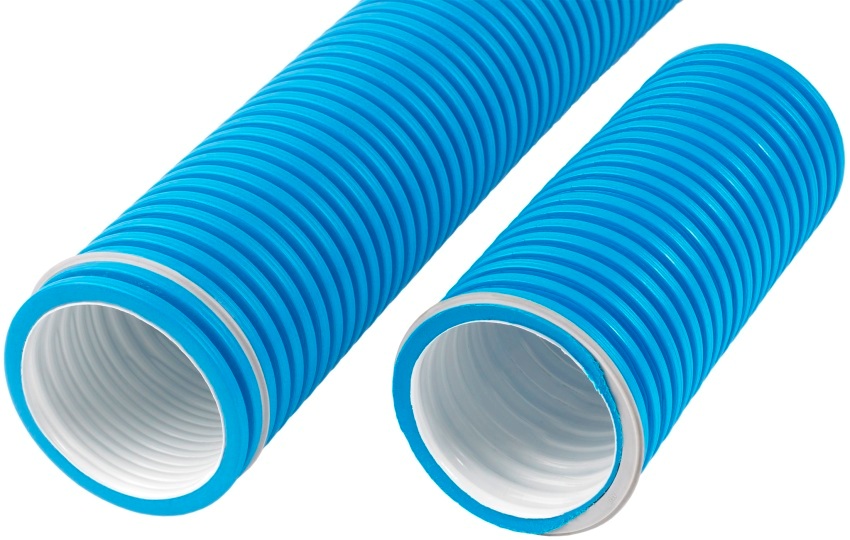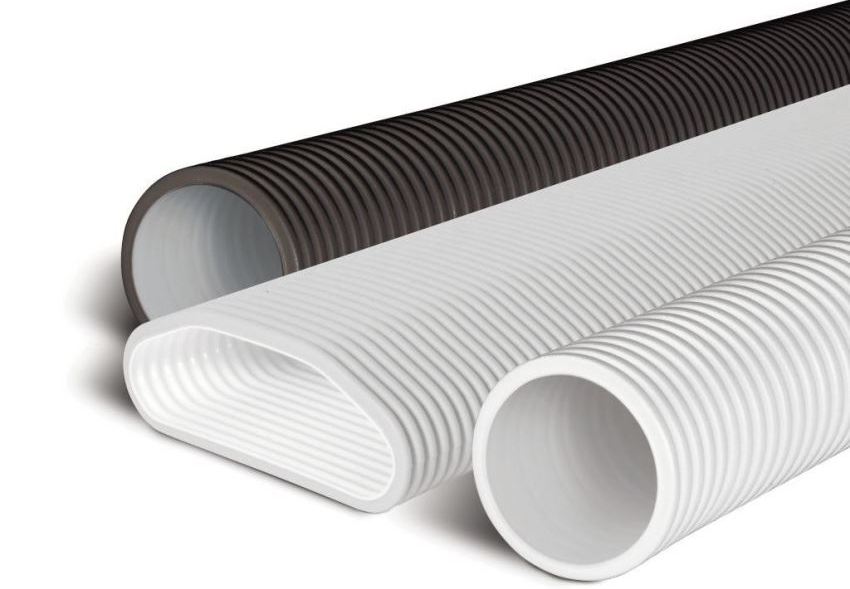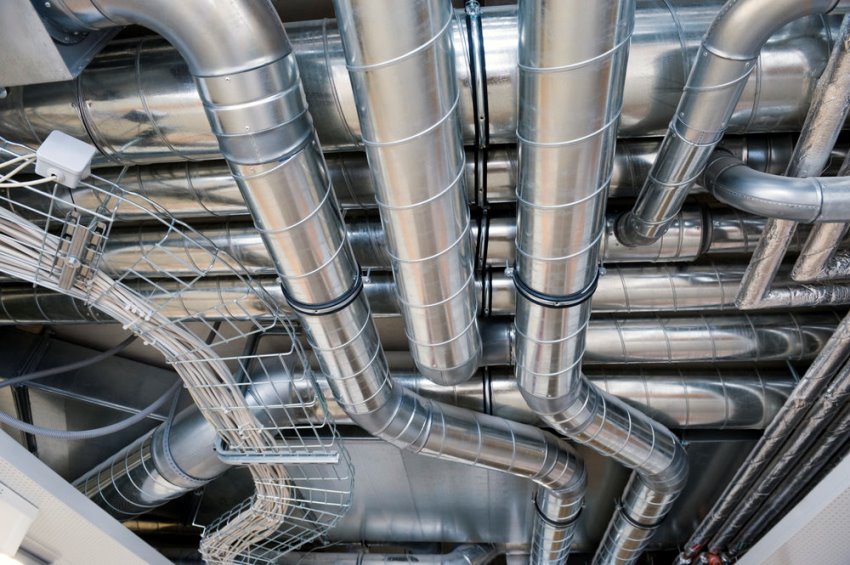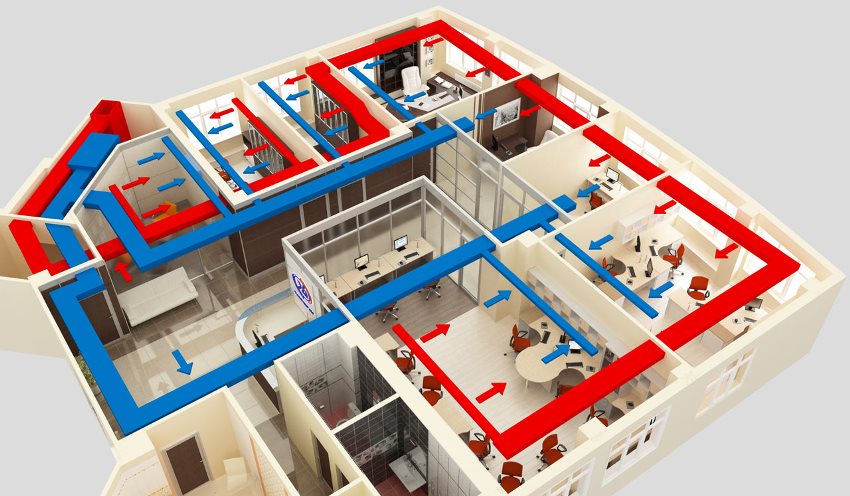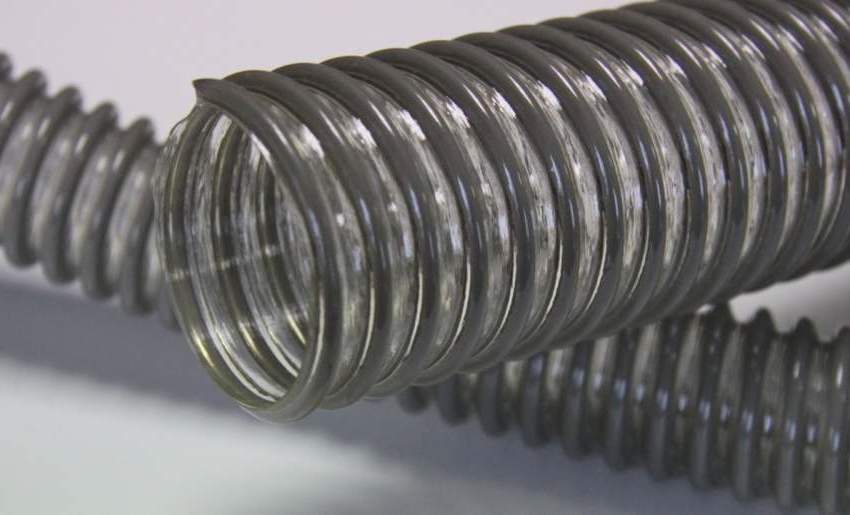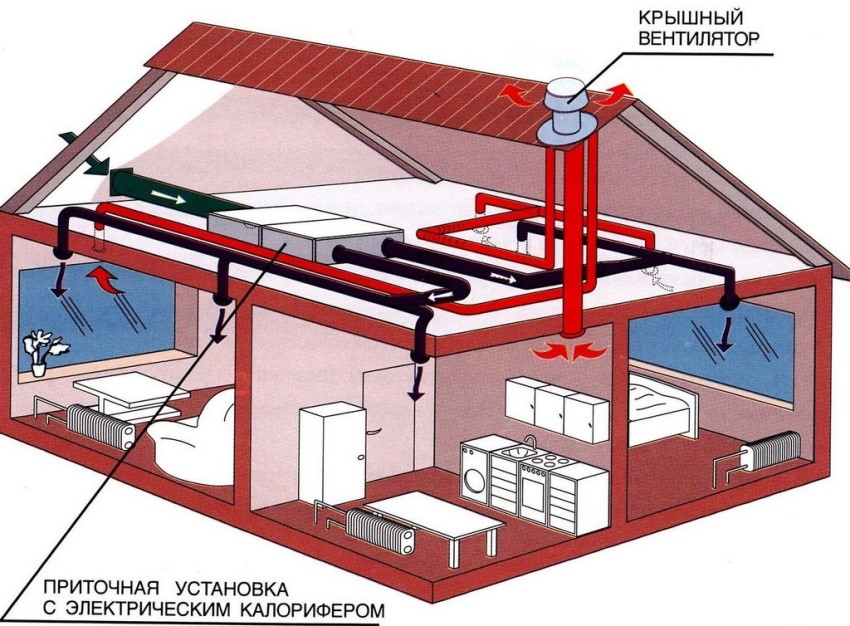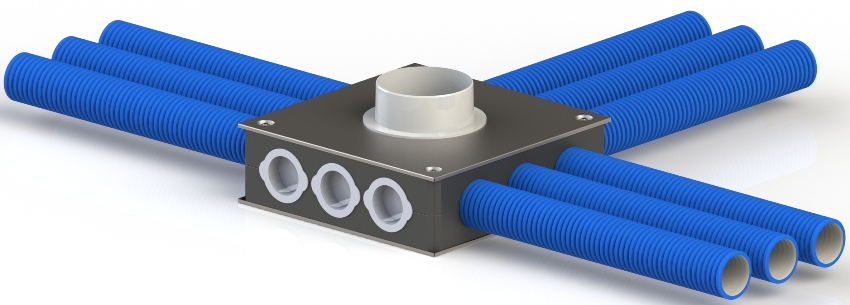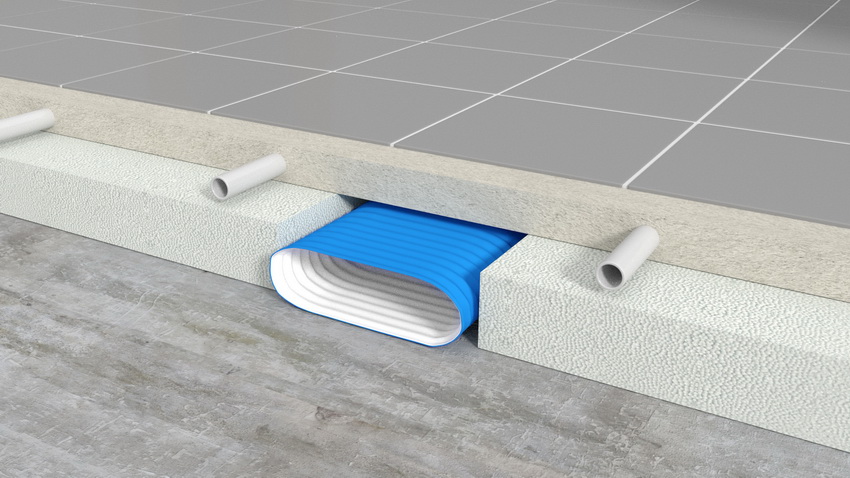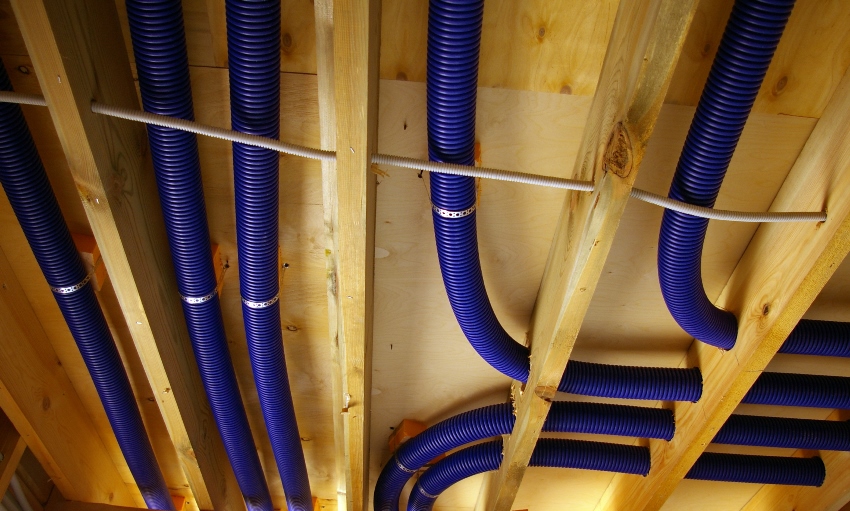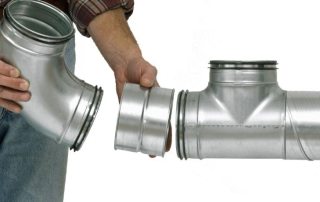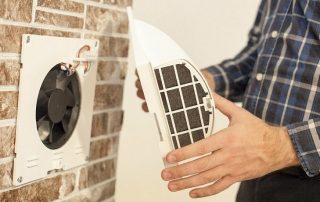Plastic air ducts for ventilation are used to provide residential and industrial premises with a stream of fresh air, eliminate unpleasant odors and remove harmful fumes. In our time, plastic channels have become especially popular due to their practicality, strength, ease of installation and relatively low cost. The article discusses in detail the issues of calculation, selection and installation of ventilation ducts.
Content [Hide]
- 1 Plastic air ducts for ventilation: types, sizes and classification
- 2 Plastic air ducts for ventilation: methods and types of connection
- 3 Advantages and disadvantages of plastic ventilation pipes for hood
- 4 Calculation of air ducts
- 5 Air ventilation in the kitchen
- 6 Methods of fastening and installation of air ducts
Plastic air ducts for ventilation: types, sizes and classification
A wide variety of use of air ducts in ventilation systems determines a wide range of their types and options. There are several parameters that form the basis of the classification:
- sectional shape: elliptical, rectangular, round;
- execution material: plastic, metal-plastic, steel;
- rigidity;
- size or diameter of the section;
- method and type of connection;
- structural performance.
In order to satisfy broad consumer needs and provide for possible design options, manufacturers offer a wide range of plastic ventilation ducts. So, for rectangular flat air ducts, typical sizes are in the range from 100x55 to 204x60 mm, the diameter of round ones is 100-200 mm.
Sectional classification
The most commonly used section types are round and rectangular. In some cases, when the design imposes strict restrictions on the size and shape of the channel, the elliptical version is used. This section is achieved by processing a round product on special machines.
For the manufacture of round plastic air ducts, less material is required, and the production technology itself is simpler. In the case of a rectangular design, costs increase by an average of 20-30% when switching from a circular section. The complication of the manufacturing process is due to the fact that such ducts are assembled together from several separate parts.
The main arguments in favor of choosing a round shape are the best tightness (which is ensured by a one-piece design and no welds), high air flow rate, reduced noise level, lighter weight and ease of installation.
As an advantage of rectangular channels, optimal placement in space should be highlighted. This form takes up less space, it is easier to adapt to the layout features, for example, when combined with false ceilings.
Useful advice! If the location of the intended location of the ventilation system imposes restrictions on the transverse dimensions of the ducts, you can use transition elements to change the shape of the section. In this case, the transverse area of the combined parts must be the same.
Classification by material of execution of air ducts
The material that is used for the manufacture of different types of air ducts depends on their area of application and possible restrictions imposed by the existing ventilation system.
The plastic or PVC type has become widespread both in conditions of the transfer of aggressive air flows and for use in all types of residential premises. Plastic is light and smooth material, resistant to moisture, acids and alkalis. Due to its tightness, various connecting elements (elbows, tees, bends) are made from it. 4.
Galvanized steel air ducts are used in ventilation systems that operate in a non-aggressive environment (temperatures up to 80 ° C). The protective coating has anti-corrosion properties and significantly increases the service life of the products, however, it increases the cost of installing ventilation ducts per m2.
The metal-plastic type of air ducts is made using two metal layers (often made of corrugated aluminum) and a foam plastic interlayer. This type has high strength with low weight. The products have an aesthetic appearance and do not need additional thermal insulation. The disadvantage is the increased cost.
Useful advice! In residential environments (especially when organizing ventilation in the kitchen of an apartment), it is preferable to use plastic wires due to less noise, weight, ease of installation and lower cost.

Corrugated pipe for ventilation systems
Other types of air ducts include polyethylene, vinyl plastic and fiberglass. These types are characterized by high corrosion resistance, low weight, the ability to bend in all planes at an unlimited angle.
Stiffness classification
Since today the most common are rigid air ducts - the bulk of all ventilation equipment on the market is focused on this type. Rigid boxes are often circular or rectangular. For manufacturing, sheet material is used. Basalt wool can be used as external thermal insulation.
Flexible air ducts for ventilation are presented in the form of a corrugation (corrugated sleeve), which is made of polyvinyl chloride (PVC). The excellent ease of transport and installation should be noted here. Before buying a flexible duct, you should consider the disadvantages of this type. Thin walls have a low level of sound insulation. Also, the embossed surface of the corrugation negatively affects the speed of air flow through the wire.
The last type is semi-rigid. It is an intermediate link between flexible and rigid products, combining high strength and elasticity.The disadvantages of such ducts include a reduced air velocity, which imposes restrictions on their use in branched systems.
Useful advice! Do not limit your selection to only one type of duct. A wide range of fittings make it easy to combine rigid and flexible channels. This combination does not in any way affect the performance of the ventilation system as a whole.
Plastic air ducts for ventilation: methods and types of connection
The most common methods for connecting duct sections are flanged and wafer joints. The basis of the first is the installation of flanges, which are attached to the ventilation duct sections with rivets or self-tapping screws. Tightness at the joints is achieved using rubber and other seals.
The flangeless connection is made using a band of thin sheet steel and metal strips.
The main types of air duct connections are:
- tees (at the points of conjugation or branching of the system);
- knees and bends (at the bends of the channel);
- adapters (for switching from a round to rectangular duct or, conversely, connecting parts of different sections);
- confusers and diffusers (in places of transition to another size). The former narrow the channel, and the latter widen it.
Advantages and disadvantages of plastic ventilation pipes for hood
Undoubtedly, flat plastic air ducts are very popular for use in residential non-industrial areas. The following positive properties of such products should be highlighted here:
- due to the absence of elements subject to oxidation in them, plastic wires do not suffer from corrosion. This feature has greatly simplified the work of designers, eliminating the need to provide additional protection systems. Oxidation resistance makes the structure itself and the installation process simpler;
- cost reduction: PVC ventilation pipes are much (sometimes 2-3 times) cheaper than their metal counterparts;
- smooth inner surface provides maximum airflow and does not require periodic cleaning;
- the ability to cut parts of the wire at the installation site, and a wide range of different fittings greatly simplify the assembly and installation of the structure;
- non-toxicity and complete safety for both humans and the environment. 8.
Along with all the listed advantages, flexible PVC air ducts have one significant disadvantage: low fire resistance.
Calculation of air ducts
Calculation of ventilation ducts is one of the most important stages in the design of an air supply system. Before proceeding with the direct selection of the cross-sectional area of the wires, it is necessary to determine the ventilation capacity by air.
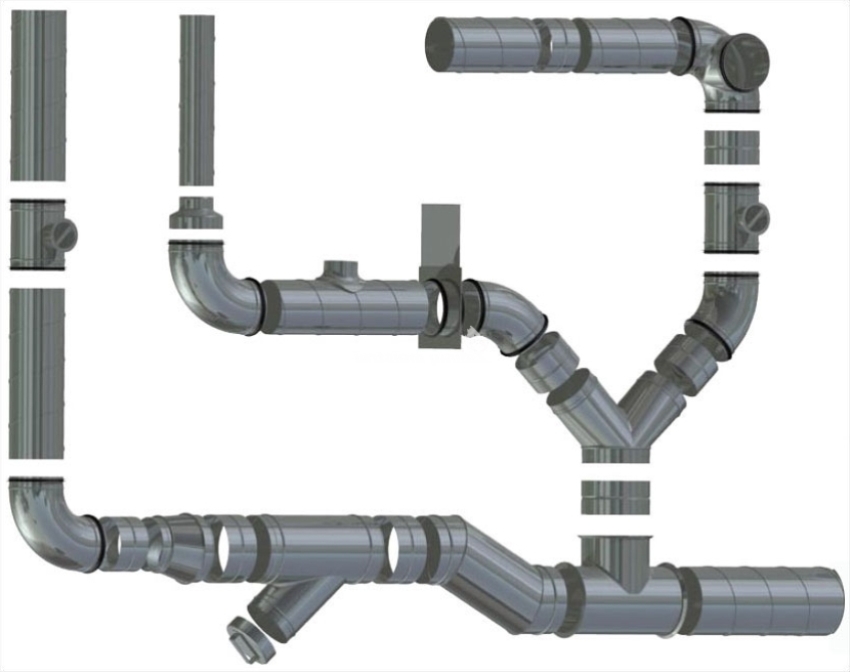
Plastic air ducts - this is a high-quality and reliable product with a long operational life
Calculation of the air capacity of the ventilation system
First, you need a plan of the object, which indicates the area and purpose of all rooms. Air supply is provided only to those rooms in which people are for a long time (living room, bedroom, office). Air is not supplied into the corridors, since it gets there from the living rooms, and then into the kitchens and bathrooms. From there, the air flow is discharged through the exhaust ventilation. Such a scheme prevents the spread of unpleasant odors throughout the house or apartment.
The amount of air supplied for each type of dwelling is calculated using MGSN 3.01.01. and SNiP 41-01-2003. The standard volume for 1 person in each room is 60 m³ / h. For a bedroom, this figure can be halved to 30 m³ / h.It is also worth noting that only people who stay indoors for a long time are taken into account when calculating.
Useful advice! The calculation of the characteristics of the ventilation system can be carried out manually according to the indicated formulas. However, there are many online calculators that make this task easier and faster.
The next step is to calculate the air exchange rate. The multiplicity shows how many times per hour there is a complete renewal of the air in the room. The minimum value is one. This value prevents stagnant atmosphere in rooms.

Before installing the pipes of the ventilation system, the necessary measurements are made and a technical project is drawn up
Based on the foregoing, to determine the air flow rate, it is required to calculate two parameters of air exchange: by the frequency and by the number of people, from which the greater value is selected.
Calculation by the number of people:
L = N x Lnormwhere
L - power supply ventilation, m³ / h;
N is the number of people;
Lnorm - standardized value of air consumption per person (typical - 60 m³ / h, in a state of sleep - 30 m³ / h).
Calculation by the frequency of air exchange:
L = b x S x Hwhere
L - supply ventilation capacity, m³ / h;
b - air ratio (living quarters - from 1 to 2, offices - from 2 to 3);
S is the area of the room, m²;
H - vertical dimensions of the room (height), m².
After calculating the air exchange for each room, the obtained values are summed up for each method. The larger will be the required ventilation capacity. For example, typical values are:
- rooms and apartments - 100-500 m³ / h;
- cottages - 500-2000 m³ / h;
- offices - 1000-10000 m³ / h
Method for calculating the cross-section of air ducts
To calculate the area of air ducts, it is necessary to know the volume of air that must flow through them over a period of time (according to the previous stage of calculation) and the maximum flow rate. The design values of the cross-section decrease with an increase in the air velocity, but the noise level increases. In practice, for cottages and apartments, the speed value is selected within 3-4 m / s.
Related article:
Air ducts for ventilation. Installation, operation and maintenance of systems
Materials for manufacturing. Types of duct cross-sections. Ways of connecting system elements. Cleaning and disinfection of air duct systems.
It should be noted that it is not always possible to use low-speed wires with large dimensions due to the complexity of placement in the ceiling space. It is possible to reduce the height of the structure using rectangular air ducts, which, with a similar cross-sectional area, have smaller dimensions compared to a round shape. However, it is faster and easier to install round flexible ducts.
The calculation of the duct area is made according to the formula:
Sc = L x 2.778 / Vwhere
Sc - estimated size of the wire cross-section, cm²;
L - air consumption, m³ / h;
V is the air velocity in the wire, m / s;
2.778 is a constant for converting various dimensions.
The calculation of the actual cross-sectional area of a circular duct is made according to the formula:
The calculation of the actual area of plastic rectangular ducts is made according to the formula:
S = A x B / 100where
S - actual duct area, cm²;
A and B - transverse dimensions of a rectangular duct, mm.
Useful advice! If it is necessary to calculate the air velocity in the duct, you can carry out calculations that are the reverse of those described for the selected channel cross-sectional area.

The quality of the outflow of polluted air depends on how correctly the ventilation system is calculated.
Calculations start from the main canal and are carried out for each branch. The air speed in the main channel can be increased up to 6-8 m / s.It should be added that in household ventilation systems, as a rule, circular ducts with a diameter of 100-250 mm or with a similar rectangular cross-sectional area are used. It is very convenient to use Vents catalogs to select plastic air ducts for ventilation.
Note! When choosing, it is necessary to focus on the compliance of product characteristics with the standards established by GOST. Air ducts must also have quality certificates.
Air ventilation in the kitchen
When choosing a hood for the kitchen, it is necessary to decide how exactly unpleasant odors and fumes will be removed - by air recirculation or by exhausting gases into the ventilation duct. Both the first and second options have their own advantages and disadvantages. It should be added that most modern devices can operate in both modes, however, in the absence of a vent channel, they can only work for recirculation.
In hoods without an air duct, the fan sucks in and passes air through the filters, thereby purifying it. Consumers who choose this class of devices are often guided by a low price and ease of installation. However, their significant disadvantages are the need for periodic filter replacement and rather low productivity.
The second option is the operation of devices in the air exhaust mode. In this case, the gas is also sucked in by the fan, then passed through the grease catcher and thrown into the ventilation shaft. This approach is more efficient, but it requires more labor-intensive installation and additional costs for organizing the drain. The duct must be sealed; it is also recommended to install a valve that cuts off the air flow from the street to the room.
After selecting a plastic air duct for the hood in the kitchen, you can buy it at a bargain price directly from the manufacturer.
Methods of fastening and installation of air ducts
The first method is pin and profile fastening. It is one of the most common in the professional environment, carried out through the L- and Z-shaped profile. In this case, the profile is attached to the box by means of self-tapping screws. In the place of fixation, rubber seals are placed on the stud to reduce the noise level and damp vibration.
When installing large main ventilation ducts, studs and traverses are most often used. The channel is supported by a crosshead, and the studs limit possible lateral displacement. A rubber seal can also be used for better fixation. Such fastening leaves the air duct airtight, which is very important when installing sound and heat insulating elements.
Clamp and stud fastening is preferred for round ducts. Short sections of flexible duct can be fastened without a stud.
Fastening with punched tape is universal. The method is suitable for rectangular and round plastic ducts. Along with the low cost of installation, the structure has no rigidity and can vibrate perceptibly.
Installation of flexible corrugated duct
Flexible and semi-rigid ducts of small cross-section, as a rule, are used in apartments as ducts for kitchen hoods. Installation is carried out in several stages:
- line marking is carried out according to design drawings or own installation scheme. Lines are drawn on the ceiling to indicate the trajectory of the passage of the channels;
- installation of fasteners. To prevent sagging, dowels are attached every 40 cm along the marking line, clamps are fixed on them;
- measuring the length of the duct. Measurement of the sleeves should be carried out at their maximum tension;
- for cutting, you can use a sharp knife or scissors, and bite the wire of the frame with nippers. Insulation is cut only with gloves;
- to increase the length of the air duct - two parts of the sleeve are put on the connecting flange and fixed with a clamp;
- the end of the sleeve is aligned with the branch pipe or flange of the ventilation grill;
- further, the direct installation of the flexible air duct is carried out. The hose under tension is passed through the installed clamps to the point of connection with the central line;
- a separate branch is made for each hole provided for by the project.
Useful advice! In the case when the ceiling space imposes restrictions on the diameter of the duct, you can use the transition from a round to a rectangular duct with a similar cross-sectional area.
MInstallation of a flexible heat-insulated duct
The installation of a heat-insulated duct is carried out in a similar way, however there are some nuances: when cutting or combining the sleeve, you need to unscrew the insulation layer, then cut / connect the inner frame and the flange, seal the connection, then return the thermal insulation to its original position, fasten and insulate again.
The heat-insulating shell is connected to the duct body with aluminum tape and clamps. They also isolate the outer layer.
It should be borne in mind that a flange connection can be a weak point when installing a soundproofed duct. Sound absorption is increased by completely putting the channel on the nozzle (no gaps). The same materials are used for sealing.
Installation of plastic air ducts for hoods in the kitchen
After selecting plastic rectangular air ducts for ventilation in the catalog and purchasing all the necessary elements, you can proceed with installation. Trial assembly of units is carried out on the floor or table, which are then suspended from the ceiling or attached to the wall. The connection of straight sections is carried out with couplings. The shaped elements are joined by nipples, which, in turn, are obtained by cutting parts of the required length from a straight section.
Connecting elements in ventilation systems are manufactured with larger diameter branch pipes for tight entry of straight ducts. Therefore, for example, a tee with a branch must be joined using a straight short pipe (nipple). After connection, this section is completely hidden by the pipes.
Leaks and gaps arising at the joints of the elements can cause air leaks, so they are covered with sealant before joining. It is worth remembering that the use of self-tapping screws also leads to depressurization.
Some contractors use self-tapping screws to screw plastic hood ducts to a hanger or bracket. With this method of installing air ducts, the price is reduced, and the process itself is significantly accelerated. It is correct to install the channel on clamps that tightly cover the pipe. This mount has a rubber gasket and is specially made for fixing to a wall bracket or hanging rod.
The studs of the required length are attached to the floor slabs with anchors or other hardware. Also commercially available are plastic brackets and snap-on clamps. Such elements greatly simplify and speed up the installation process.
The organization of the ventilation system is a relatively simple process. The described simple calculation method allows you to easily select the necessary elements, and a wide range of ventilation ducts and connecting elements simplifies the placement and installation of plastic air ducts in the limited space of ordinary residential premises.

